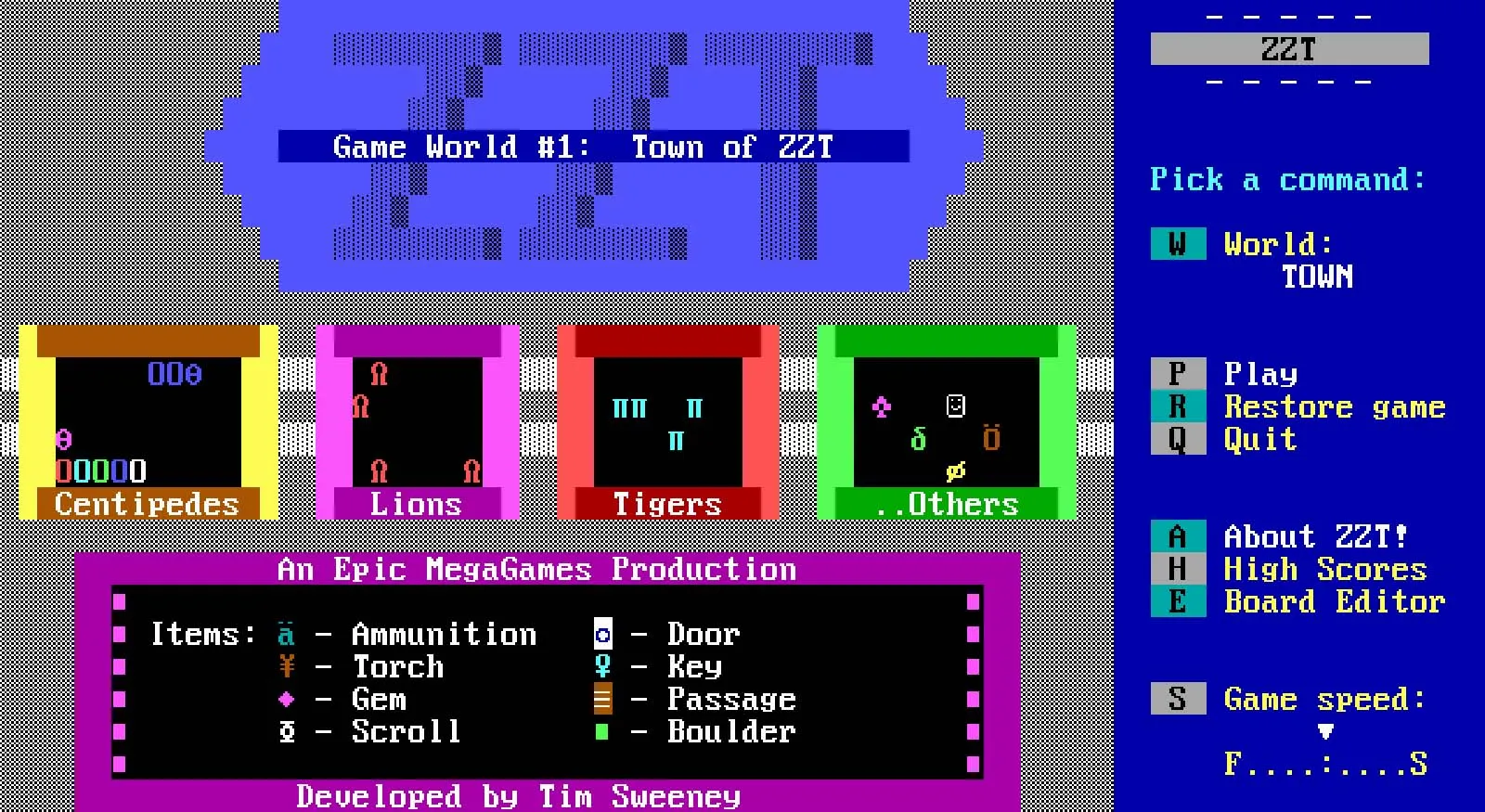True Superhero Tim Sweeney’s Unreal Conservation of Real Nature
Although Fortnite is the most successful video game of the last decade - an all-conquering media franchise that generates news headlines with every patch notes release - the man behind its success, Tim Sweeney, has an even more incredible achievement up his sleeve. As the designer of Unreal Engine, he’s created the tools that have enabled an extraordinary range of new games to be created, a tool used by everyone from hobbyist bedroom coders to major AAA game studios. In the process he’s shared in a lot of their successes, and is using the profits from that success to create a different kind of nurturing environment in his beloved North Carolina, where he is creating new conservation areas to protect the natural landscape.

The young Apple fan
Tim was born in Maryland in 1970, the youngest of three brothers. The Sweeneys were a comfortable family, but before long they found their comfortable life being turned upside down, as young Tim tore apart various appliances. By the age of five he had dismantled and repaired the family lawnmower, and soon afterwards he had built a go-kart using recycled parts he had scrounged up around the family home. Although there were gaming machines in the house he took little interest in them; he only enjoyed one game - Adventure - on the Atari 2600 console, and the family’s Commodore 64 was also largely ignored. It was only when his parents brought home an Apple II that Tim’s fascination with gaming began; he would later claim that he invested over 10,000 hours in learning to program the machine between the ages of 11 and 15. During this period he also learned a great deal about entrepreneurship from his older brothers, who at the time were creating successful software startups of their own. Tim channeled this entrepreneurial energy into a lawn mowing business when he was 15 years old, making enough money to fund his teenaged business ventures.
"The brand new social experience where you activate your gaming skills as you train like a spy."
- TimeOut
Take on thrilling, high-energy espionage challenges across different game zones.

One of his earliest projects was a videogame, ZZT, which he developed while still a student on his mechanical engineering course at the University of Maryland. ZZT began life as a replacement for commercially available text editors used by programmers; Tim didn’t like any of the ones available to him and resolved to build his own. This initially straightforward project snowballed into a remarkable video game that was years ahead of its time; a text-based adventure that sought to teach players how to code by forcing them to use programming skills to solve puzzles. What’s more, Tim loaded ZZT with powerful editing tools that enabled players to create their own content. He then released the game using the shareware model, popular in the very earliest days of the internet, where consumers were asked to voluntarily pay what they thought the game was worth and also distribute it as widely as possible. The game was moderately successful, selling in the region of 5,000 copies, but few realized at the time how innovative ZZT was, or how influential Epic MegaGames (the company Sweeney founded to publish it) would become.

Tim the toolmaker
Epic MegaGames grew slowly at first. Tim’s second game, Jill of the Jungle, was a platformer that was more commercially oriented than ZZT, and owed a large debt to the platform game successes of Nintendo, but like ZZT it featured a level editor allowing users to create their own content. It would be the last game Tim developed personally, and instead he sought to position Epic Games (who were by now no longer Mega) as a publisher. The company released several more moderately successful shareware titles in the mid-nineties, but Tim was busy working on a project that would not just revolutionize Epic, but the entire games industry. In a throwback to the level editors Tim had designed for ZZT and Jill in the Jungle, it was a 3D game building tool called Unreal Engine; not just a level editor, but a fully fledged design environment allowing developers to quickly build new games featuring the exciting new technology of 3D graphics.

Unreal Engine’s commercial debut featured the game that bore its name, Unreal, released by Epic in 1998. Unreal was a 3D arena shooter, and a departure for Epic in that it was one of their first commercial products not to be released as shareware; unlike most of Epic’s output it retailed for $50 in traditional shops, and it sold very well, becoming one of the most popular games of 1998, albeit one that would soon be forgotten as just one of many 3D arena shooters popular at that time. The software that powered it, however, would not be forgotten so quickly. Epic licensed Unreal Engine to other developers, who used it to quickly develop fully fledged 3D worlds of their own, most notable Ion Storm’s classic Deus Ex. At first, gamers and hobbyist programmers only had access to a limited subset of Unreal Engine’s powerful development tools, allowing them to modify existing titles but not create their own. A license to develop original software using the first release of Unreal Engine cost many hundreds of thousands of dollars, but this business model was not the preferred one of an old shareware pioneer like Tim Sweeney, and he soon changed the terms to make them mutually agreeable to all parties. By the time Epic unveiled Unreal Engine 4 in 2014, there were no licensing costs. Anyone could download Unreal Engine and develop software with it, and the only cost would be a revenue sharing cut on royalties. As of the release of Unreal Engine 5 in 2020, developers only pay royalties if their program has generated more than $1m in revenue.
From the unreal world to the real world
This innovative business model has revolutionized the way people make video games. By 2020 almost half of all commercial video games were built using Unreal Engine, with its ubiquity showing no signs of relenting. Meanwhile, another new property was helping to boost Epic’s fortunes even further - in 2017 the firm released Fortnite, which swiftly became the biggest gaming property of all time. By 2020 Fortnite had over 350 million registered accounts with over 10 million active users per day, and its enormous success has given Sweeney another tool with which to fight on behalf of software developers. Since 2020 he’s led a very public battle with Apple and Google over the transaction fees they charge on their iOS and Android mobile platforms. He’s particularly damning of Apple, posting lengthy Twitter threads lamenting the Cupertino firm’s change in direction, and comparing it with his own company’s ethos, writing: "Epic is a company built on the aspiration of serving a new generation of developers and customers as openly and supportively as Apple did in the era when they invented personal computers.” These attacks have proved hugely controversial in the tech world, but Sweeney speaks as someone who benefitted from Apple’s support for developers in the 1980s, and has clearly demonstrated his own support for developer communities ever since.

Sweeney’s campaigning side is also evident in other areas. He’s an enthusiastic and vocal advocate for conservation of natural environments, and has bought up huge tracts of land across America to protect them from developers and other threats. His main focus is in North Carolina where he has lived since 1999, and where is seeking to create what he calls a "conservation corridor”. This is an ongoing effort that has seen him purchase more than 50,000 acres in the state since 2008, but he is giving the land back to people who share his goals of conservation. In April 2021 he made the largest donation of land in the history of North Carolina when he handed 7,500 acres in the Roan Highlands to the Southern Appalachian Highlands Conservancy. As with his gaming endeavors, it seems Tim is determined to use his own successes to help facilitate the work of others; a True Superhero working for the benefit of all.
SPYSCAPE+

Join now to get True Spies episodes early and ad-free every week, plus subscriber-only Debriefs and Q&As to bring you closer to your favorite spies and stories from the show. You’ll also get our exclusive series The Razumov Files and The Great James Bond Car Robbery!


Gadgets & Gifts
Explore a world of secrets together. Navigate through interactive exhibits and missions to discover your spy roles.
Your Spy Skills
We all have valuable spy skills - your mission is to discover yours. See if you have what it takes to be a secret agent, with our authentic spy skills evaluation* developed by a former Head of Training at British Intelligence. It's FREE so share & compare with friends now!
* Find more information about the scientific methods behind the evaluation here.


Stay Connected
Follow us for the latest
TIKTOK
INSTAGRAM
X
FACEBOOK
YOUTUBE